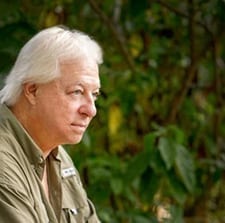A Southern Writer
September 2, 2021By Tom Poland
Mississippi’s Willie Morris
Several years back, I attended Edgefield’s Camellia Tea. As I was leaving, a lady in a red blazer walked up. “You’re that fellow who writes about the back roads of South Carolina aren’t you?”
“Guilty as charged, ma’am.”
“Well, you need to speak to my camellia tea ladies group. We will have a delightful time.”
It was Miss Henrietta Humphries, a lovely Southern lady. I thanked her and gave her my card. The next day Miss Henrietta called. “We are thrilled that you will speak to a small gathering of camellia tea ladies. Know that you will pick me up at 422 Columbia Road at 10:30 sharp. Don’t be late.”
Pulling into Miss Henrietta’s drive, I saw her lovely magnolia. Its glossy dark green leaves returned the light just so. Miss Henrietta, bathed in morning light, stood near it.
“Good morning, you’re right on time. Come, let’s walk the yards.”
Miss Henrietta led me among her camellias in her spacious back yard. Inside her home a surprise waited. She pointed to a wicker chair with autumn-hued floral cushions.
“Guess who sat in that chair?”
“The governor?”
“Heavens, no. Willie Morris. I lived in Mississippi for a while. Sit in it.”
“Willie Morris.” I liked this southern writer and used a quote of his in Georgialina, A Southland As We Knew It. “In the South, perhaps more than any other region, we go back to our home in dreams and memories, hoping it remains what it was on a lazy, still summer’s day twenty years ago.” He’s right. We do.
I sat in Miss Henrietta’s chair. I hoped to feel a connection with the Mississippi country boy who became a literary lion and editor of Harper’s magazine at 32, its youngest. From country boy to Rhodes Scholar to literary phenom he went, launching William Styron’s and Norman Mailers’ careers along the way. Willie Morris became a major literary figure in New York City, the Big Cave as he called it. No Big Apple for Willie.
I sat and waited for literary inspiration. I leaned back, closed my eyes, and imagined baby talking, New Orleans-born Truman Capote inviting Willie to dinner. “You must come for quiche.”
Writing had led me to a throne. Willie rubbed literary shoulders with Irwin Shaw, James Thurber, and William Faulkner. I waited and waited. All I felt was a lump in the cushion.
I never met Willie. Sitting in this chair was as close as I could get. Back in 1995 my photo appeared beside his in Reckon magazine. That was four years before he died. William Weaks “Willie” Morris, a Southern writer. Dead of a heart attack at 64.
I asked James Dickey what’s a Southern writer. “Material written by people who are Southerners, either lifetime Southerners or those who have some association with the area and others who deal with material based on southern themes and locales and sometimes they’re the same people.”
Willie was the same and he loved stories that hide along back-roads. Willie had Bob Dylan’s, “Highway 61,” in mind when he rented a car in Memphis and drove that legendary road that sings the Delta Blues. He wrote a novel, The Last of the Southern Girls, and his nonfiction works included North Toward Home, My Dog Skip and The Courting of Marcus Dupree.
He wrote this: “I have always had a love for American geography, and especially for the landscapes of the South. One of my pleasures has been to drive across it, with no one in the world knowing where I am, languidly absorbing the thoughts and memories of old moments, of people vanished now from my life.”
And he wrote this: “It took me years to understand that words are often as important as experience, because words make experience last.”
Like Dickey, like Conroy, he left us too soon. He’s buried in Yazoo City, Mississippi’s Glenwood Cemetery 1,252 miles from New York City, the Big Cave.
Visit Tom’s website at www.tompoland.net
Email Tom at [email protected]















